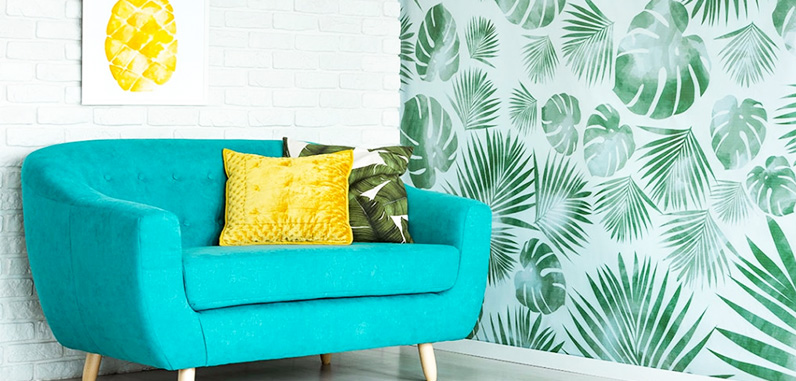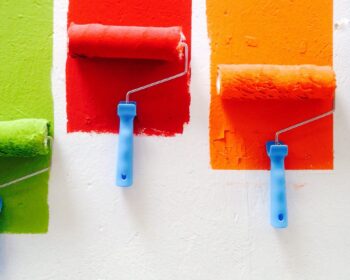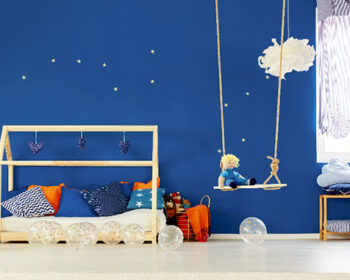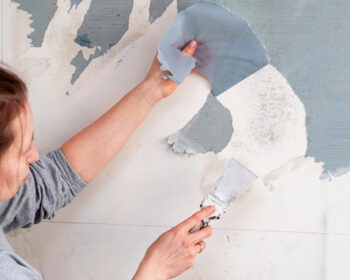
Paint vs Wallpaper, Which Method is Better?
The advantage of using paint or wallpaper to decorate your walls is that you may alter and transform the look of your room. Applying a light, pastel paint hue will quickly soften and open up a dramatic space. While darker wallpaper with a striking design can suddenly make a room that feels too large feel snug. The use of paint or wallpaper has advantages and disadvantages. Easy application, affordability, and spatial versatility are important considerations. No matter what you decide, adding paint or wallpaper to your walls will be beneficial.
Below are key factors to consider when deciding between painting vs. wallpaper
Preparation
When determining whether to paint or wallpaper a wall, one must consider how long it will take to prepare the surface. You can skip this tip if you’re starting with a blank wall, but if the wall already has a finish on it, keep on reading.
Wallpaper
Removing current wallpaper can be a time-consuming operation that demands patience and the correct tools. With the use of chemicals or stripping tools, wallpaper can be removed, but caution is required to avoid damaging the wall. For detailed instructions tailored to your application, consult a professional house painter in Melbourne.
Paint
If you plan to paint over a damaged wall, fill in any holes with spackle and give it 24 hours to dry. Your painting preparation will be easier if priming paint is applied before painting over darker colour paint. Wallpaper demands more time for preparing than painting.
Selection & Durability
There are countless colour and variety options for both paint and wallpaper. While wallpaper is available in paper and vinyl surfaces for durability and a variety of finishes, paints come in a variety of glosses and sheens. Which finish you choose can vary significantly depending on your family’s lifestyle.
Wallpaper
The usage of wallpapers can be advantageous, because they are very durable and will withstand children’s wear and tear, high traffic locations, and many variations are scrubbable. However, high moisture bathrooms and kitchens may cause wallpaper to rip away from the wall since wallpaper is applied with an adhesive.
Paint
For places that require a cheap and simple application, paint is a decent alternative depending on the sheen/finish. Paints with a semi-gloss to high gloss finish are long-lasting and typically used on trim, external doors, etc. On interior walls, satin, eggshell, and rarely flat sheens are employed. In other hand, paint can chip off of damaged, scraped, or battered walls, requiring repair and repainting.
Expense
Wallpaper and paint prices can range from low to high. The cost of wallpaper is typically higher when it is purchased in rolls, as materials, and when it is installed. On average, paint is less expensive, requires few supplies, and is easy for a novice to use. It should be highlighted that you can buy cheap wallpaper and save money on installation by doing it yourself. Similar to this, more expensive imitation paint finishes and textured paint can be pricey, particularly if they require professional application.
A Combination of Both
Many people want the flexibility of painting their walls in any colour they choose while adding a texture. Paintable wallpaper is available in rolls or adhesive squares. After the textured wallpaper has been installed, the wall may be left unpainted or painted. The ideal wallpaper is one that can be painted.
The Conclusion
There are many options available in the wonderful world of wall treatments. Either wallpaper or paint will provide subtle or striking colour and character to your home. Try paintable wallpaper or stick with paint or wallpaper if you want the attractiveness of both. Home design is fascinating because you have so many options!





